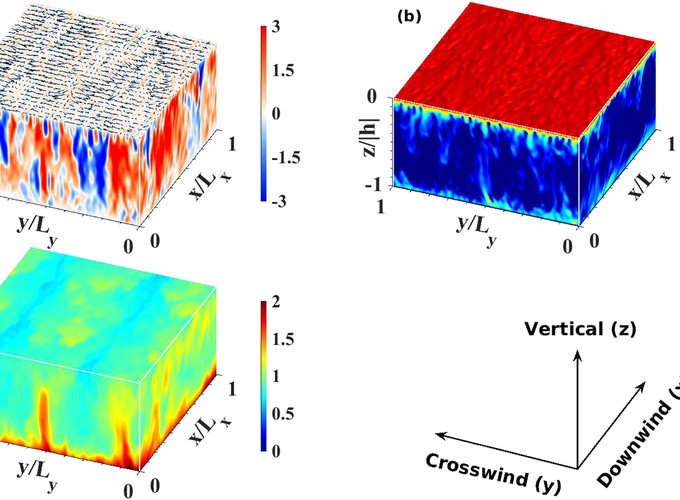Abstract
Cohesive sediments exist as flocs of different sizes, which are built and destroyed through flocculation processes including both aggregation and breakup. This study investigates sediment flocculation processes in wave‐driven Langmuir turbulence that is commonly observed in coastal ocean through embedding a size‐resolving flocculation model into a turbulence‐resolving hydrodynamic model. The specific research questions are how Langmuir turbulence affects flocculation processes and how flocculation processes impact the spatial and size distributions of suspended cohesive sediment. The results show that Langmuir turbulence suspends flocs in the water column and organizes flocs of different sizes. By modulating the encounter of flocs and redistributing flocs in the turbulence field, Langmuir turbulence enhances the aggregation and breakup rates of flocs that are located in similar regions with high turbulent dissipation rates and suppresses those of others. As an outcome of modulated flocculation processes, floc size distribution changes with depth and floc mass concentration profiles change with floc size. The addition of wave breaking increases the shear rate near the surface and reduces the median floc size and averaged settling velocity, leading to increase in total floc mass concentration in the whole water column. Wave breaking also increases cross‐shelf sediment transport by more than 15% under the simulated conditions, which is comparable to that due to Langmuir turbulence compared to shear turbulence. Both floc size distribution and floc concentration vary with wind and wave conditions.
